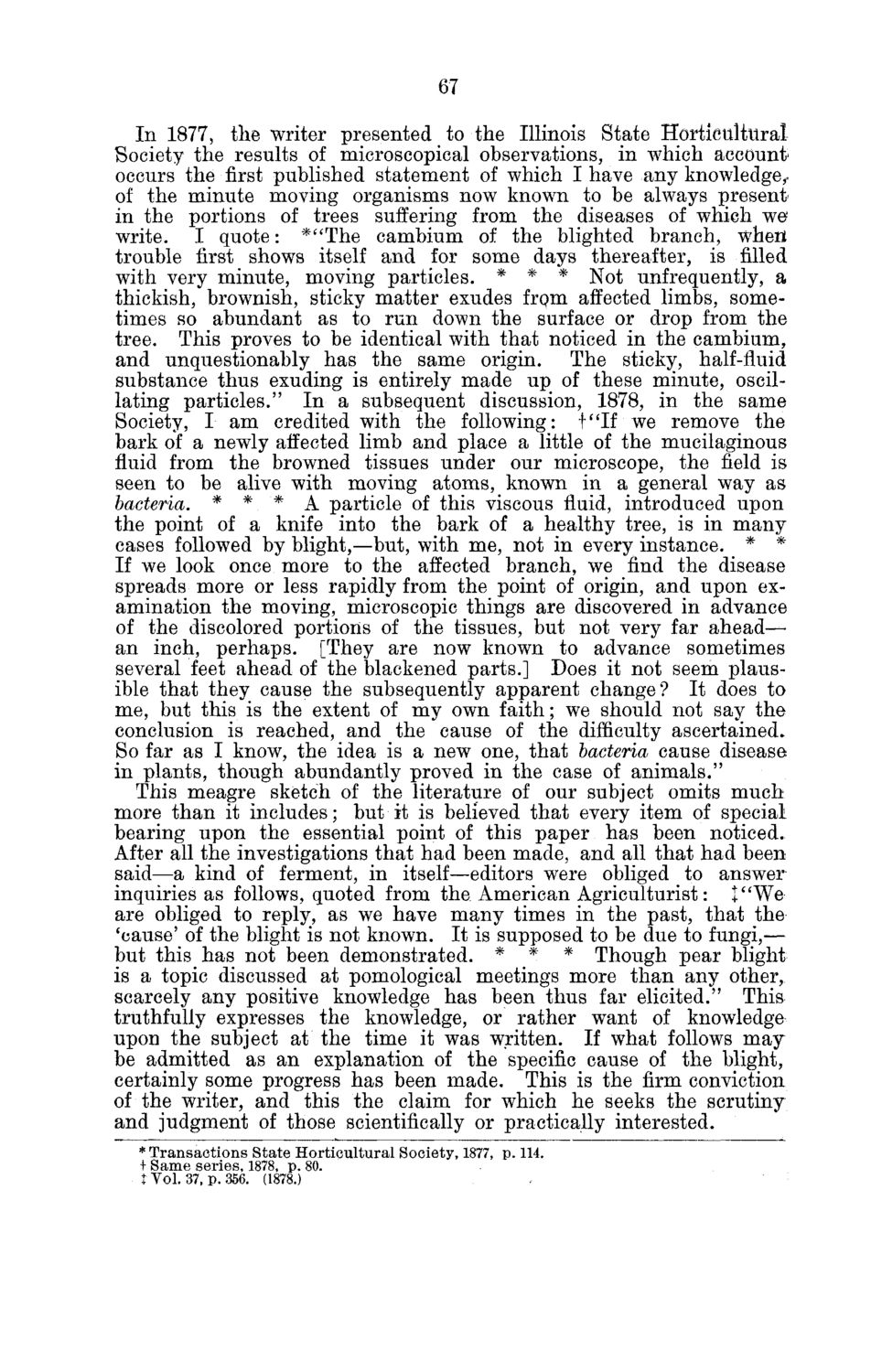| |
| |
Caption: Board of Trustees Minutes - 1880
This is a reduced-resolution page image for fast online browsing.

EXTRACTED TEXT FROM PAGE:
67 In 1877, the writer presented to the Illinois State Horticultural Society the results of microscopical observations, in which accountoccurs the first published statement of which I have any knowledge,, of the minute moving organisms now known to be always present' in the portions of trees suffering from the diseases of which we' write. I quote: *"The cambium of the blighted branch, wheri trouble first shows itself and for some days thereafter, is filled with very minute, moving particles. * * * Not unfrequently, a thickish, brownish, sticky matter exudes frqm affected limbs, sometimes so abundant as to run down the surface or drop from the tree. This proves to be identical with that noticed in the cambium, and unquestionably has the same origin. The sticky, half-fluid substance thus exuding is entirely made up of these minute, oscillating particles." In a subsequent discussion, 1878, in the same Society, I am credited with the following: t"If we remove the bark of a newly affected limb and place a little of the mucilaginous fluid from the browned tissues under our microscope, the field is seen to be alive with moving atoms, known in a general way as bacteria. * * * A particle of this viscous fluid, introduced upon the point of a knife into the bark of a healthy tree, is in many cases followed by blight,—but, with me, not in every instance. * * If we look once more to the affected branch, we find the disease spreads more or less rapidly from the point of origin, and upon examination the moving, microscopic things are discovered in advance of the discolored portions of the tissues, but not very far ahead— an inch, perhaps. [They are now known to advance sometimes several feet ahead of the blackened parts.] Does it not seem plausible that they cause the subsequently apparent change? It does to me, but this is the extent of my own faith; we should not say the conclusion is reached, and the cause of the difficulty ascertained* So far as I know, the idea is a new one, that bacteria cause disease in plants, though abundantly proved in the case of animals." This meagre sketch of the literature of our subject omits much more than it includes; but it is believed that every item of special bearing upon the essential point of this paper has been noticed. After all the investigations that had been made, and all that had been said—a kind of ferment, in itself—editors were obliged to answer inquiries as follows, quoted from the American Agriculturist: t"Weare obliged to reply, as we have many times in the past, that the 'cause' of the blight is not known. It is supposed to be due to fungi,— but this has not been demonstrated. * * * Though pear blight is a topic discussed at pomological meetings more than any other, scarcely any positive knowledge has been thus far elicited." This truthfully expresses the knowledge, or rather want of knowledge upon the subject at the time it was written. If what follows may be admitted as an explanation of the specific cause of the blight, certainly some progress has been made. This is the firm conviction of the writer, and this the claim for which he seeks the scrutiny and judgment of those scientifically or practically interested. * Transactions State Horticultural Society, 1877, p. 114. f Same series, 1878, p. 80. f Vol. 37, p. 356. (1878.)
| |